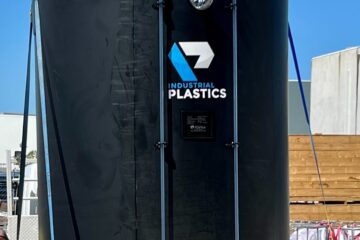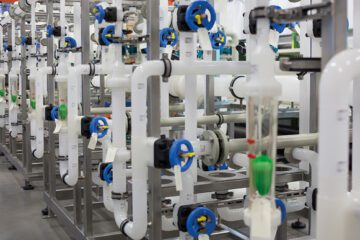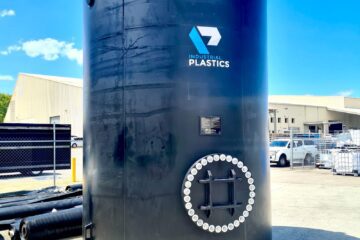A common question the Industrial Plastics technical department receives is – “I’m looking to change from a stainless steel tank to a plastic alternative, but will it have the same strength and what are the advantages?” Yes! We can achieve a very similar structural build with significant performance improvements!
We don’t just make tanks, we also work with you to achieve a design that works.
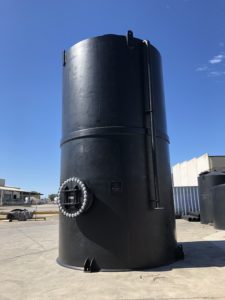
What you need to know
When changing out a stainless steel tank for a fabricated plastic tank, five key questions will be asked: tank volume, geometry, what is the media being processed/contained, at what temperature, and is the vessel located indoors or outdoors? From those answers we can consider the best material to build a new tank. Industrial Plastics build static thermoplastics tanks from HDPE (High Density Polyethylene), PP (Polypropylene), PVC (Polyvinyl Chloride) and PMMA (Acrylic).
Why use a plastic alternative to stainless steel?
There are a number of reasons to choose plastic tanks as a better alternative to stainless steel. Stainless steel offers great strength and durability in some applications, however it is less chemically resistant than plastic alternatives and more expensive than plastic fabrications.
When to use a plastic tank
Here are some media examples where a stainless steel tank might be best replaced with a quality plastic tank:
- Hydrochloric Acid: stainless steel is not recommended as this acid is highly corrosive, in this case HDPE would provide a solid alternative.
- Mash water: acids mixed with salts at elevated temperature can be corrosive for Stainless Steel, Polypropylene is recommended for this equipment.
- Saltwater: very high chromium metals can be ok (although expensive), but plastics will be faultless and PMMA (acrylic) is great for clear aquariums.
- Sodium Hydroxide: HDPE is fully resistant against this chemical, a stainless steel counterpart will have risk of stress cracking, etching and pitting.
- Sodium Hypochlorite: this is a highly corrosive chemical, some plastics and stainless steel is not suited for containment, depending on concentrations; PVC will usually be the best considered material to build a safe containment tank.
- Urea: stainless steel grade 316 can be used, but a much more cost effective and completely safe solution can be found with HDPE.
- Water Tank: there are many stainless steel water tanks available, and most are well made and can expect to be in service for 25 years, but they are more expensive than plastic tanks. HDPE tanks have excellent weatherability with standard 25y design life, with HDPE’s very high Environmental Stress Cracking Resistance (ESCR) they can remain in service for longer than 25 years with modern construction techniques.
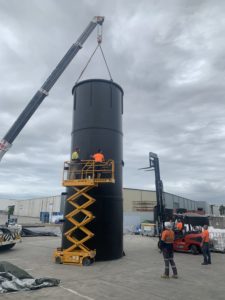
In order to achieve the structural strength of a stainless steel tank, a plastic alternative will need to consider a greater wall thickness and/or additional reinforcing. Plastic tanks can be reinforced by having external ribbing plates, internal baffles or steel frames. To eliminate any corrosion, reinforcing rings and frames can be encased in plastics and sealed with welds. Additionally, nozzle connections can have PP coated backing rings for a complete corrosion resistance system.
Another great advantage for a plastic tank is it’s low comparable weight to a stainless steel alternative (even after adequate reinforcement), this makes installation somewhat easier and reduces the allowable load for the substrate for the chosen installation location.
Industrial Plastics has solutions for practically all containment and operational scenarios where a solid, stable and long-lasting vessel is required.
Contact us
For more information on our tank manufacturing capabilities, contact our team on 1300 465 888 or email [email protected] to see how we can help deliver a solution for your needs.




















